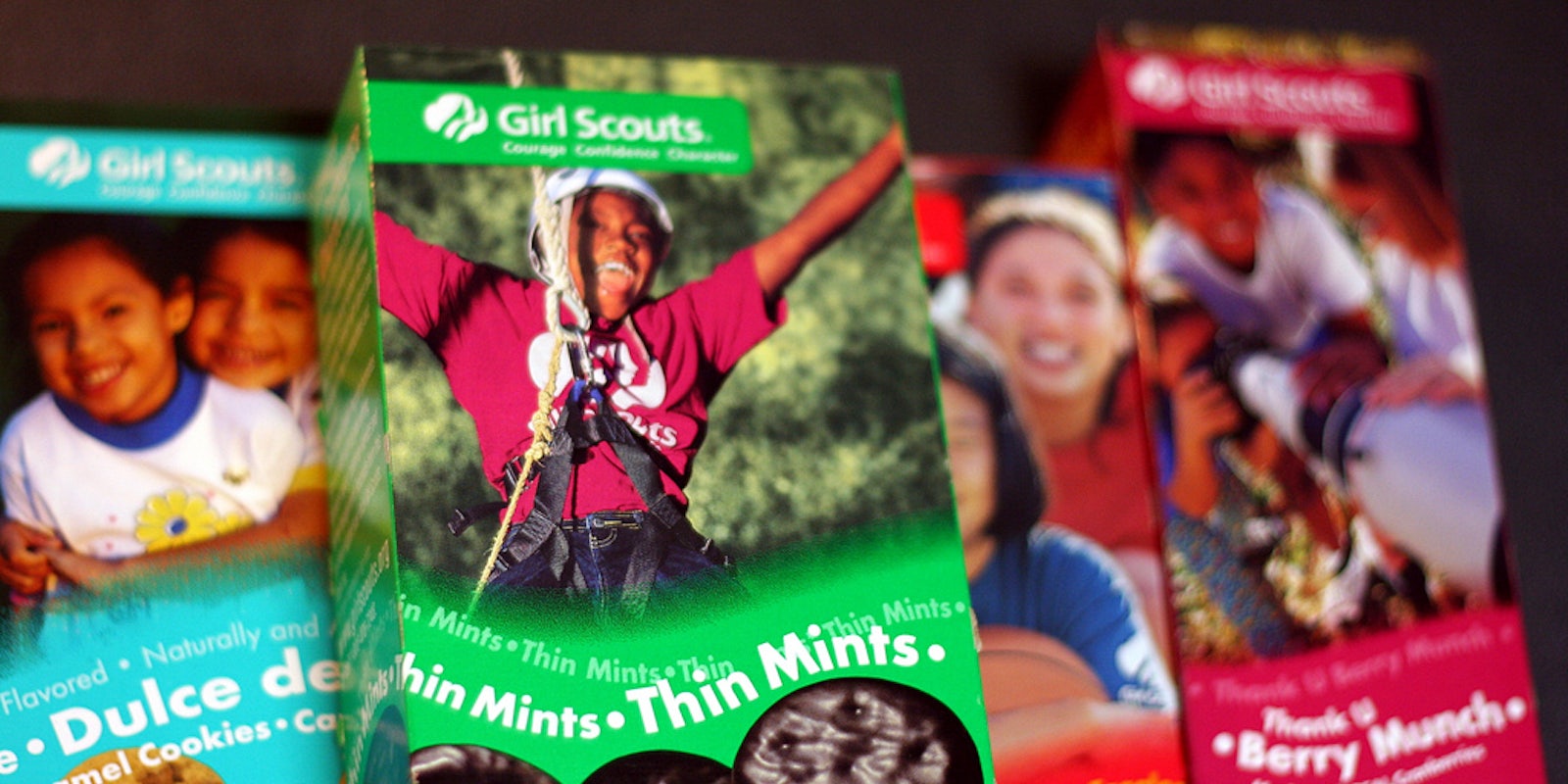The Girl Scouts made headlines late last year for joining the 21st century and making their coveted cookies available online. They even released an app that allowed them to better manage their sales. To further endear America to them, the scouts then added three new flavors to add to their arsenal of already-popular baked treats: Trios, Rah-Rah Raisins, and Toffee-tastics.
How are these additions fairing? To find out, Grub Street employed two 11 year-old girls to conduct a taste test and documented their critiques. They sampled a combination of tried-and-true Girl-Scout-cookie favorites and two of the newer flavors.
Both girls hated the Trios, which is quite understandable, since they’re officially described as gluten-free and made with real peanut butter and whole grain oats, factors that greatly affect a cookie’s texture and palatableness. The Trios also came packaged in a plastic bag rather than the highly recognizable Girl Scout cookie box.
The girls also tried the Rah-Rah Raisins, also made with whole grain oats but loaded with plump raisins and Greek-yogurt-flavored chunks. One of the testers, the daughter of New York restaurant critic Adam Platt, was certain that Rah-Rah Raisins tasted like a health cookie and claimed that “oatmeal and raisins don’t necessarily go together.” Nonetheless, both girls liked this flavor better than the Trios, despite being unable to taste the Greek-yogurt-ness of the cookie.
The kids then tested five of the older, more popular flavors, and surprisingly, most of them got the thumbs-down. The Trefoils were deemed “too lemon-y,” the Tagalongs “too salty,” and the Do-Si-Dos—which Grub notes are Adam Platt’s go-to Girl Scout cookie—lacking in peanut butter. Both girls deeply hated Samoas for their overly coconutty flavor but did love the Thin Mints, which are arguably the group’s most popular cookie.
Girl Scout cookies are practically an institution and have enjoyed years of recognition and customer satisfaction. But the truth is, the target market for these baked goods is largely comprised of children, who don’t necessarily equate cookie with healthy. In order to appeal to the younger demographic, they may need to stay away from diet-friendly options and focus on developing new flavors that Kids These Days will actually appreciate.
H/T GrubStreet | Photo by hinnosaar/Flickr (CC BY 2.0)


